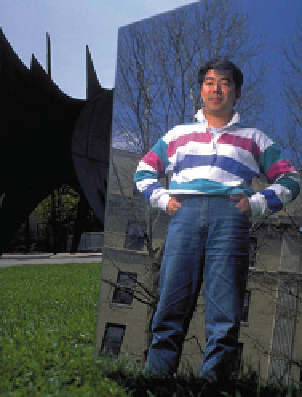Biomedical Engineering Reference
In-Depth Information
Fig. 1
Data hiding in image
than one part in 30 for random patterns. However, in uniform regions of an image,
the HVS is more sensitive to the change of the luminance, approximately one part
in 240. A typical cathode ray tube (CRT) display or printer has a limited dynamic
range. In an image representation of one part in 256, e.g., 8-bit gray levels, there is
potentially room to hide data as pseudorandom changes to picture brightness.
Another HVS ''hole'' is our relative insensitivity to very low spatial frequencies
such as continuous changes in brightness across an image, i.e., vignetting.
An additional advantage of working with still images is that they are noncausal.
Data-hiding techniques can have access to any pixel or block of pixels at random.
Using these observations, we have developed a variety of techniques for placing
data in still images. Some techniques are more suited to dealing with small
amounts of data, while others to large amounts. Some techniques are highly
resistant to geometric modifications, while others are more resistant to nongeo-
metric modifications, e.g., filtering. We present methods that explore both of these
areas, as well as their combination (Fig.
1
).
Data Hiding in Audio
Data hiding [
12
,
13
] in audio signals is especially challenging, because the human
auditory system (HAS) operates over a wide dynamic range. The HAS perceives
over a range of power greater than 1 billion to one and a range of frequencies
greater than one thousand to one, Sensitivity to additive random noise is also
acute. The perturbations in a sound file can be detected as low as one part in 10
million (80 dB below ambient level). However, there are some ''holes'' available.
While the HAS has a large dynamic range, it has a fairly small differential range.

Search WWH ::

Custom Search